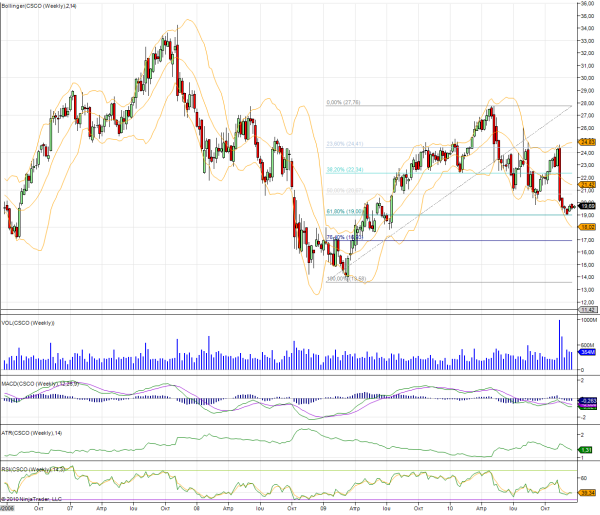
The bad news is that the 61.8% Fibonacci retracement level does not seem to converge with any other support or resistance level in the weekly graph, which would certainly strengthen our prediction. Support failure of previous Fibonacci levels is also apparent, since 38.2% level did not hold at all while converging with a support level in February. 50% Fib level on the other hand did provide a nice trading setup a couple of months ago, but it also gave way during November, when CSCO stock’s price opened with a gap shown in the daily stock graph. Perhaps the 61.8% level proves to be more reliable.
If I was going to trade the weekly graph of Cisco Systems, my first profit target would be set at $24, while the ATR indicator (1.31) would imply that a stop loss of $1 sounds reasonable. That equals to a 1:4.5 risk/reward ratio for the first profits if we scale out and sell 50% or so of our shares. 30% could be traded out at about $27, leaving 10 or 20% of our original trading position open, in case our entry point was indeed a major reversal point. We can then use either a trailing stop or previous support levels to exit the remaining position.
Trading the CSCO weekly chart needs patience, as we can stand watching the price action for weeks to come until we decide to trade out. Pinpointing good entry and exit points in the more detailed daily or hourly chart is paramount. Only time will tell if the 61.8% Fibonacci retracement level will be proven correct as an entry point.
Comments (No)